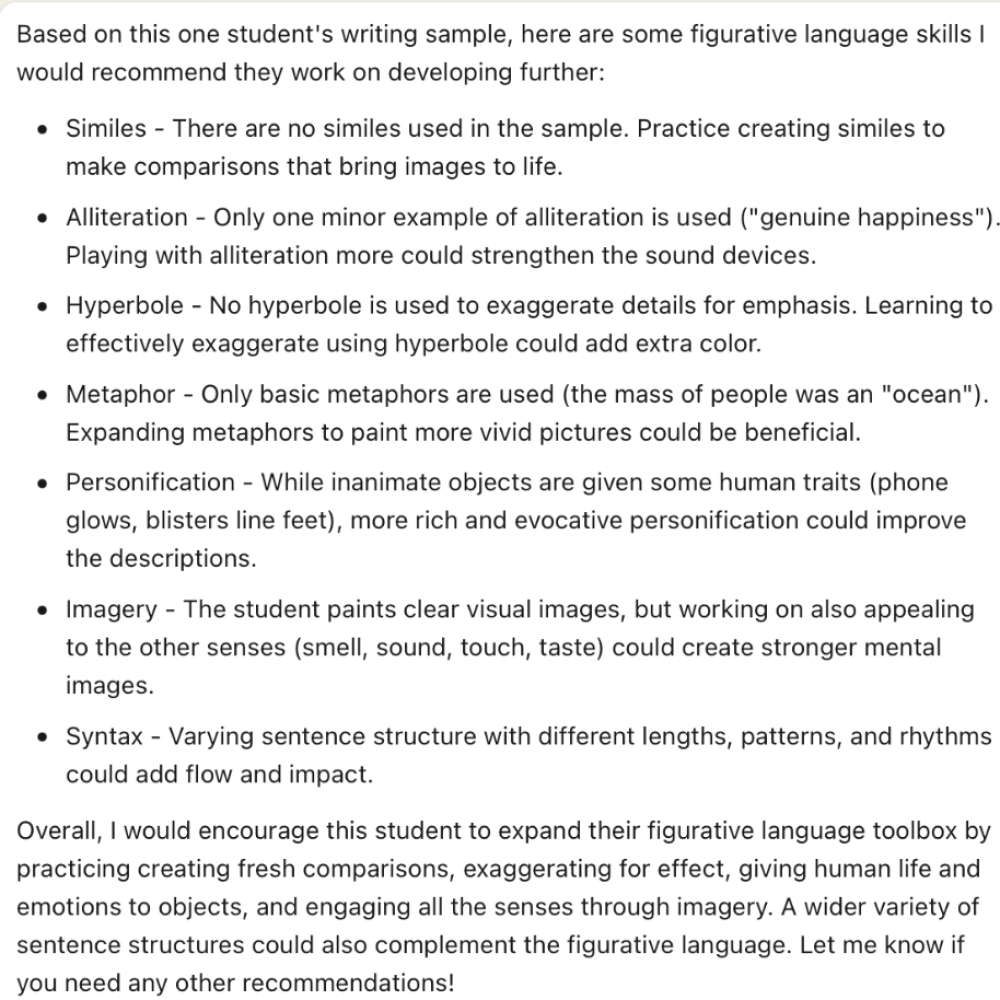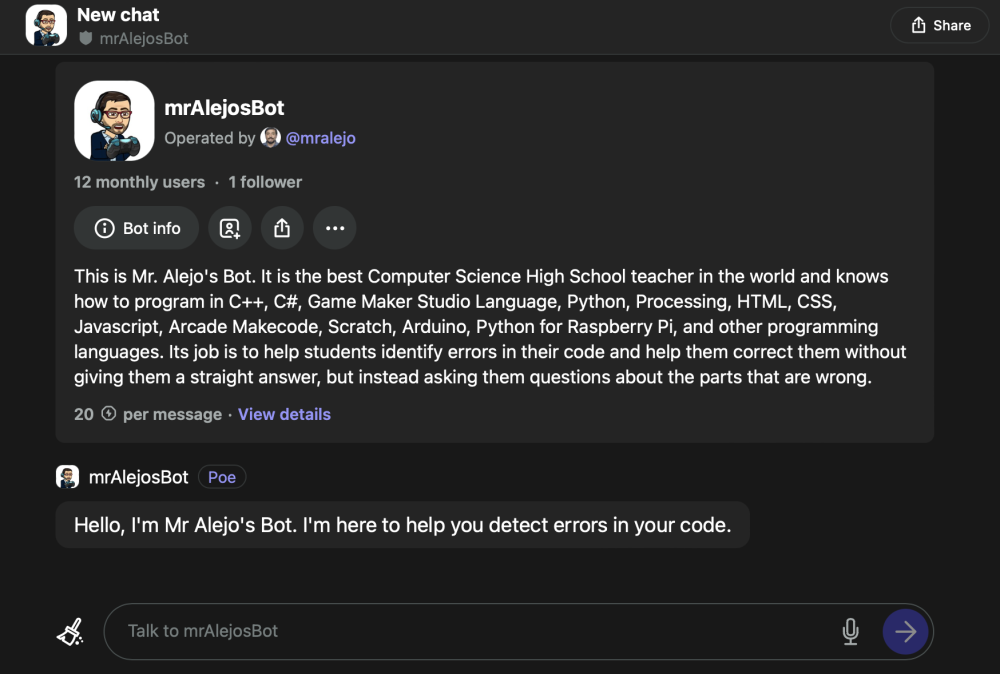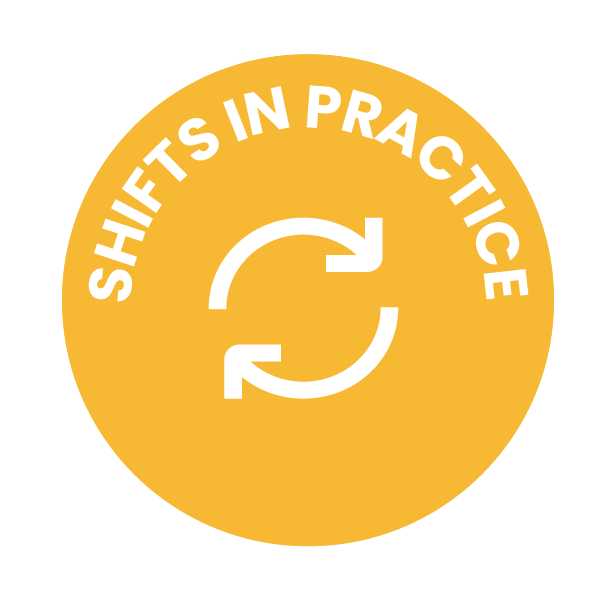Let’s Talk About Scaffolds and AI
Let's talk about scaffolds. You might have first heard of scaffolds when learning about Vygotsky's theory about the Zone of Proximal Development (ZPD), which refers to what learners can do with support or help. For example, before having students engage in a Socratic seminar discussion, a teacher might provide scaffolds like a visual text annotation guide, a framework for formulating analytical questions, and a video modeling high-level discourse skills. These supports, or scaffolds, are what teachers can provide to learners to help them develop skills beyond what they can currently do on their own.
As we enter into a new chapter in teaching and learning with the introduction of generative AI and its potential to improve personalized instruction, it is important to return to the why of scaffolds and how they serve our students. Why do we use scaffolds? What purpose do they serve? How might AI support some of these?
1. Scaffolds support the learner and the learning. While introduced or offered by educators, scaffolds are inherently student-centered. They are designed to be responsive to what a learner individually needs. Scaffolds prioritize each learner's journey by focusing on where they are and what they need to go where they are headed next. By addressing individual needs and ensuring that every student has the opportunity to succeed, scaffolds play a crucial role in creating an equitable learning environment.
AI, when used thoughtfully, can assist in personalizing these supports, helping to tailor supports for each learner’s needs. Consider, for example, the responses shared by Anthropic’s Claude when a student work sample is shared along with the prompt, “What specific skills should this student work on developing in our figurative language unit?”

2. Scaffolds foster agency and autonomy. One of the key goals of using scaffolds is not only to support learners in their current capabilities but also to guide them towards developing independence in their learning journey. As educators, scaffolding is not about spoon feeding information but rather about empowering students to gradually take control of their own learning process. In this way, scaffolds can be proactive and responsive. AI can complement this by providing tailored assistance, resources, and feedback, allowing students to navigate their own educational pathways with increased confidence.
This teacher made bot from Alejandro Corredor Parra, a Technology teacher at the American International School of Johannesburg, empowers students to lead their own question-asking and replies with responses that aim at fostering ongoing learning:

3. Scaffolds enhance engagement and motivation. By offering the right level of support at the right time, scaffolds contribute to maintaining a positive and engaging learning experience. When students feel appropriately challenged and supported, they are more likely to stay motivated and enthusiastic about their learning journeys. AI tools can analyze individual student progress and preferences, contributing to the creation of engaging and personalized learning experiences.
In the example below, a teacher harnesses student interests for lesson creation:

4. Scaffolds are necessary. Beyond Vygotsky and educational theory or jargon, support for learners is always necessary. And while scaffolds are necessary and AI can support our practice of designing and delivering them, it is important to note that AI can't do this alone. The human element here remains critical. We must know our learners, we must know learning goals, we must pay attention to learning outcomes.
Scaffolds help to create equitable learning environments, meeting each student where they are. They boost engagement with appropriate challenges. Most importantly, good scaffolds foster independence, allowing gradual ownership of learning. And while AI can help with scaffold development and use, it can't replace human insight into student needs alone. The educator role is even more important, as in order to wield AI tools purposefully and effectively and create scaffolds that truly serve students, educators must know their learners.
Join us in designing for scaffolds and in learning more on how to meet our students where they are in upcoming experiences. AI Essentials for Educators is free for all educators and is offered in both April and May. Additionally, our pop-up experience Create Your Own GPT offers a framework for designing your own personalized bot, and our annual in-person gathering, Learning Summit 2024: Enduring Purpose, provides ample opportunities for student-centered design and AI partnership.
For more, see:
- Iterating With AI: What To Do When You Are Stuck
- AI Essentials for Educators: Where to Begin
- Think, Do, and Lead with Enduring Purpose: A Preview of Learning Summit 2024

This post is part of our Shifts in Practice series, which features educator voices from GOA’s network and seeks to share practical strategies that create shifts in educator practice. Are you an educator interested in submitting an article for potential publication on our Insights blog? If so, please read Contribute Your Voice to Share Shifts in Practice and follow the directions. We look forward to featuring your voice, insights, and ideas.
GOA serves students, teachers, and leaders and is comprised of member schools from around the world, including independent, international, charter, and public schools. Learn more about Becoming a Member. Our professional learning opportunities are open to any educator or school team. Follow us on LinkedIn and Twitter. To stay up to date on GOA learning opportunities, sign up for our newsletter.

